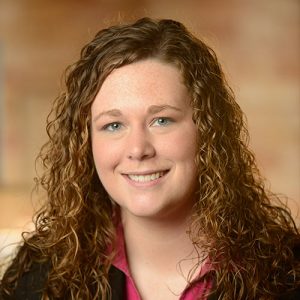 By Jessica Derynck, AIA, LEED AP
By Jessica Derynck, AIA, LEED AP
DSGW Healthcare Architect
I recently took part in the LeadingAge Minnesota Institute conference in St. Paul— one of the premier meetings nationwide for older adult services providers.
A major theme was “Aging in Place”—the idea that older adults can live in a single location for the remainder of their lives and health transitions. To compete, many care facilities now offer an increasing array of services and luxurious amenities such as spas, high-end dining options, and therapy services.
I left wondering: what draws older adults to choose where to live? Not just in terms of a specific facility, but the region itself?
Keeping Connections
Many seniors stay in their hometown to be near family, memories, and friends. Others may decide to follow their children to other regions.
While some adults move out of their house with little remorse, many struggle with the loss of independence. When freedoms are lost, seniors maintain a level of autonomy thru choices offered in a hospitality-like setting.
Design for Life
What if we saw aging as not some kind of physical diminishment but a natural growth into something new? At any age, our loved ones, activities and engagements ground us in a place. When we speak of “aging in place”, we should also consider aging with a “sense of place.” That means, exploring the many ways we find connections to community.
 A deeper understanding of how we value places throughout our lives can transform design for aging and even our sense of where to locate residential facilities within a town or city. DSGW’s senior housing projects already encourage social connection through open kitchens where residents can cook together or in a team with staff. We include fireplaces, inviting common areas and outdoor spaces. But, on a larger scale, here are other ideas worth considering:
A deeper understanding of how we value places throughout our lives can transform design for aging and even our sense of where to locate residential facilities within a town or city. DSGW’s senior housing projects already encourage social connection through open kitchens where residents can cook together or in a team with staff. We include fireplaces, inviting common areas and outdoor spaces. But, on a larger scale, here are other ideas worth considering:
- Plan for visiting family and friends. Even in small communities, facilities should include lodging for visitors or be located near hotels.
- Come back to the community. New facilities should be located within walking distance near public places such as parks, farmers markets, and shops.
- Celebrate the generations. Facilities should be planned to be multi-generational by providing a day care, elementary school, or college classrooms on site to allow residents to connect with youth.
- Partner with your neighbors. Can the site be designed to host community events such as concerts, children’s carnivals, or farmers markets?
When designing a senior facility, providing services that maintain personal freedoms and a sense of community will allow residents to gracefully “age in place.”
